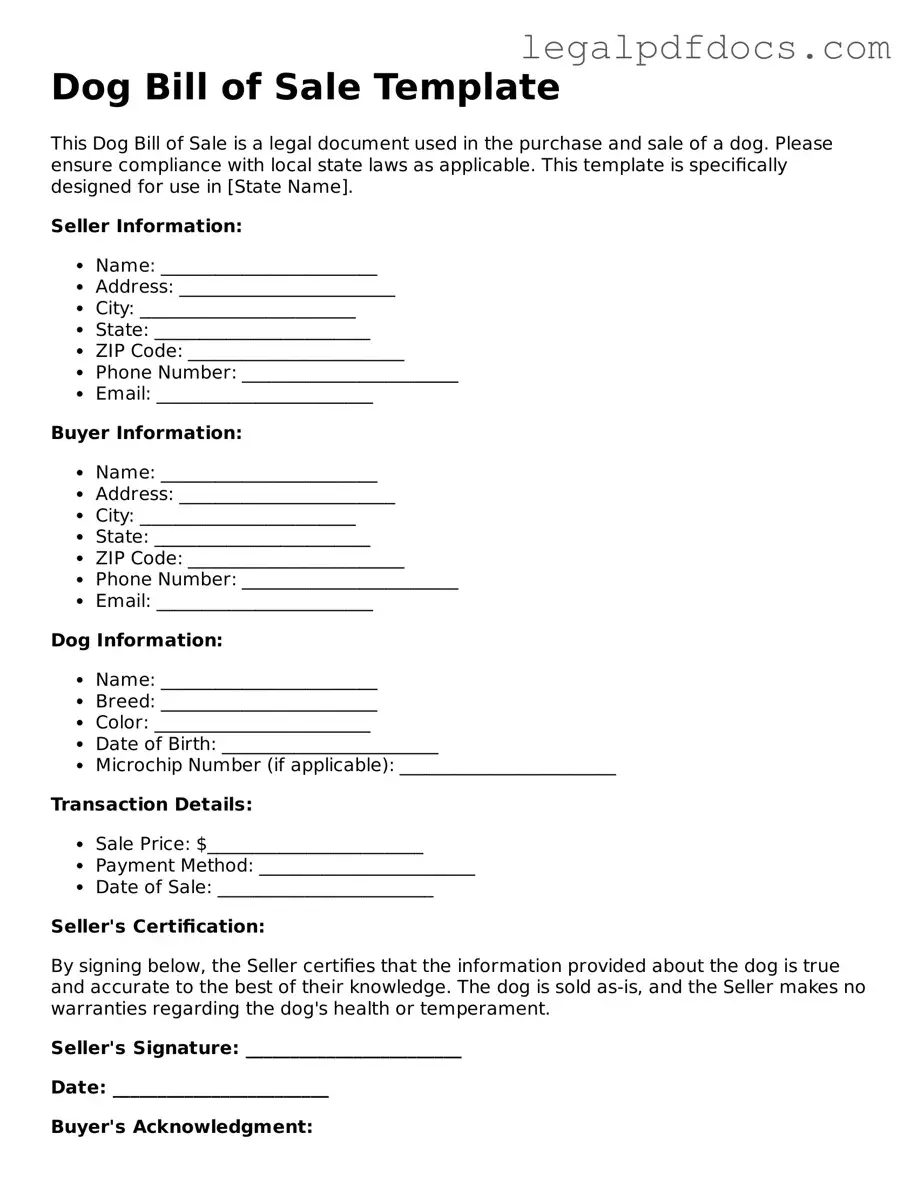Dog Bill of Sale Template
The Dog Bill of Sale form is a legal document that facilitates the transfer of ownership of a dog from one party to another. This essential paperwork not only provides proof of the transaction but also outlines important details about the dog, such as its breed, age, and any health considerations. If you're ready to make a responsible and informed purchase or sale, consider filling out the form by clicking the button below.
Open Dog Bill of Sale Editor Here
